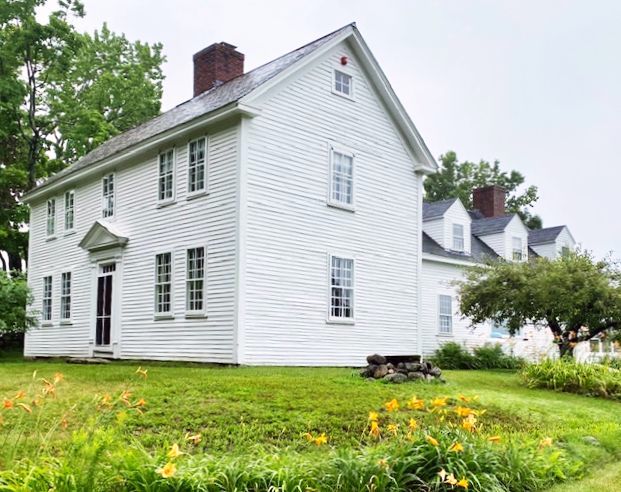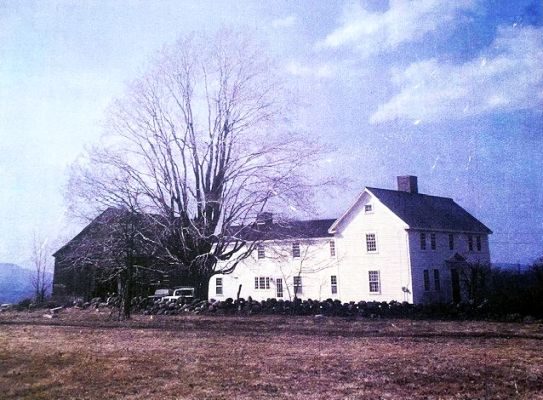New Boston Historical Society
New Boston, New Hampshire

Behind the Door: 266 South Hill Road
by Mary Atai (September 2021)
In 1807 Peter Cochran, the son of early prominent citizen Deacon Thomas Cochran, bought 160 acres here. This was one-fourth of a King's Grant. Peter married Mary McCurdy and they had four children, one of them also being named Peter. This Peter had one son, Alfred E. Cochran. He is listed as still owning the farm in the 1860 census. It was valued at $5,000 by that time.
The origin of the house is believed to be around 1785. Built as a two-room over two-room, with a center chimney, this part has been left mostly untouched. The parlor contains a small section of original stenciling, in the style of Moses Eaton, as was popular at that time. There is an original built-in corner cupboard with decorative fluting on the sides. A massive fireplace stands in the dining room. The fireplaces are surrounded by fireside walls of decorative Georgian paneling. The staircase to the bedrooms is made up of turned balusters, and although the house is not grand, details were not spared in the woodworking. The doors are made with mortise and tenon joints, requiring no glue or nails, and the windows remain 12 over 12 panes.
David and Emily Frances Upton (grandparents of Frances Towne) moved to this house in 1884, when Frances' mother, Emily Josephine Upton, was one year old. There was no electricity, but there was a very deep well with a winch over the top to crank the bucket up and down. The perishable food was kept in the bucket. Frances Towne reports that Grammy Upton died in the house. Frances' mother grew up to marry Jesse Byam. The next generation also started in this house because Frances' two older brothers, Donald, and Harold, were born here. Later the Byam family moved farther down South Hill and started their own homestead. The Upton's oldest son, Charles, inherited the big house. He is remembered for making and selling checkerberry extract from the plentiful checkerberries on the property. He never married and eventually the house passed to Frances' mother, but she was forced to sell, due to high taxes.
She sold to Mr. Charles Woolley. It was still two-rooms over two-rooms at that time, with a series of sheds behind the house leading to the barn. Mr. Woolley had four children and needed space, so he combined the sheds into the large ell addition on the back and put in bathrooms. During some work on one of the windows in recent years, corncobs and an 1882 newspaper were found, having been used for insulation. The Woolley family stayed only two years, however, selling the property to the Townes family.


Charles and his wife, Frances, are buried here on the land they loved, and the property continues to be owned by the Townes family.
The author thanks Mr. Bill Veillette for always sharing his expertise.
Click here to return to the main page for "Behind the Door" articles.
